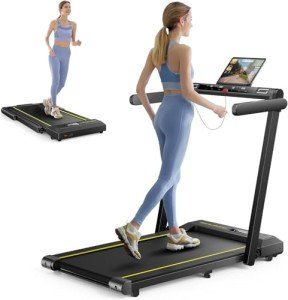Discovering the Manual Incline Treadmill: A Comprehensive Guide
As the fitness market constantly develops, with new devices and makers hitting the market, one piece of devices has stayed a staple in numerous homes and health clubs: the treadmill. Specifically, the manual incline treadmill provides an unique method to cardiovascular physical fitness training. This guide looks into the features, benefits, and factors to consider of using a manual incline treadmill.
What is a Manual Incline Treadmill?
A manual incline treadmill is a non-motorized treadmill that needs users to power their movement by walking or operating on the belt. Unlike standard treadmills, which rely on electrical power to move the belt, manual incline treadmills depend solely on the user's energy. The incline setting, which can be changed, helps mimic uphill running, supplying a reliable workout.
Key Features of Manual Incline Treadmills
| Function | Description |
|---|---|
| Manual Operation | Users must propel the belt themselves, making it a self-paced workout. |
| Adjustable Incline | Incline settings can be changed, using differed resistance for a harder difficulty. |
| Compact Design | Frequently more lightweight and compact than motorized treadmills, making them easier to store. |
| Resilient Construction | Normally developed with sturdy materials, created to hold up against extensive usage. |
| Digital Display | Some models may feature a fundamental digital display screen to show time, range, and calories burned. |
Advantages of Using a Manual Incline Treadmill
1. Boosted Cardiovascular Fitness
The manual incline treadmill efficiently elevates heart rate, leading to enhanced cardiovascular health. The incline setting requires more effort from the muscles, thereby increasing the total exercise intensity.
2. Adjustable Workouts
With manual treadmills, users have full control over their pace and incline. This function allows them to tailor exercises to line up with physical fitness goals, whether focusing on endurance structure or interval training.
3. Lower Operating Costs
Manual incline treadmills do not need electricity, making them a cost-effective option to traditional treadmills. This economical element appeals to those wanting to enhance their home health club without incurring high energy expenses.
4. Engaging Full-Body Workout
Running or walking on an incline engages several muscle groups, including the legs, glutes, and core. This total-body activation helps tone and enhance the body while burning extra calories.
5. Lowered Risk of Injury
The low-impact nature of a manual incline treadmill can be less taxing on the joints compared to high-impact aerobic exercises. However, users ought to still practice excellent form and begin gradually to lower the threat of stress or injuries.
Factors to consider When Using a Manual Incline Treadmill
Security First
While manual incline treadmills have numerous benefits, there are some security considerations to bear in mind:
- Falling Hazard: Since users propel the belt themselves, it is necessary to preserve a consistent pace to avoid losing balance.
- Incline Levels: Adjusting the incline throughout usage can be challenging and needs mindful attention to maintain stability.
Appropriate Form and Technique
To maximize the benefits while lessening the danger of injury, users must emphasize appropriate running or walking form. This consists of keeping the back straight, shoulders unwinded, and arms in a natural position.
How to Choose the Right Manual Incline Treadmill
Choosing the best manual incline treadmill is critical to attaining physical fitness objectives. Below are key elements to consider:
| Criteria | Recommendations |
|---|---|
| Weight Capacity | Make sure the treadmill can support your weight; a lot of have capacities varying from 250 to 400 pounds. |
| Adjustability | Look for treadmills with numerous incline settings to offer workout range. |
| Mobility | Consider foldable designs if storage space is limited. |
| Comfort Features | Look for non-slip surfaces and cushioned running locations to boost comfort. |
Frequently Asked Questions (FAQ)
1. How do I preserve a manual incline treadmill?
To maintain a manual treadmill, routinely examine the belt for wear and ensure it runs efficiently. Tidy the frame and running surface area, and examine the bolts and screws for indications of loosening.
2. Is a manual incline treadmill appropriate for novices?
Yes, manual incline treadmills can be suitable for beginners. Users can start at a slow rate and slowly increase strength. Nevertheless, it's essential to understand one's physical fitness level and start carefully.
3. Can I perform interval training on a manual incline treadmill?
Definitely. The adjustable incline feature enables users to develop varied exercises, ideal for interval training. Alternate in between walking and performing at different inclines to keep exercises engaging and challenging.
4. Is a manual incline treadmill quieter than a motorized one?
Yes, due to the absence of a motor, manual incline treadmills generally operate more silently, making them an exceptional choice for shared spaces.
5. How much space do I require for a manual incline treadmill?
Manual incline treadmills typically inhabit less area than motorized designs. Nevertheless, users should ensure there's ample area for motion around the treadmill for safety.
The manual incline treadmill uses a special blend of benefits and flexibility, making it an outstanding option for those aiming to improve their workout routine without counting on electrical power. From enhanced cardiovascular physical fitness to personalized training choices, it offers a comprehensive technique to physical fitness. By comprehending page , advantages, and safety factors to consider, users can select the right design and integrate it efficiently into their workout program. Whether utilized in a home gym or a larger fitness center, a manual incline treadmill can be an indispensable tool for those focused on fitness and health.

